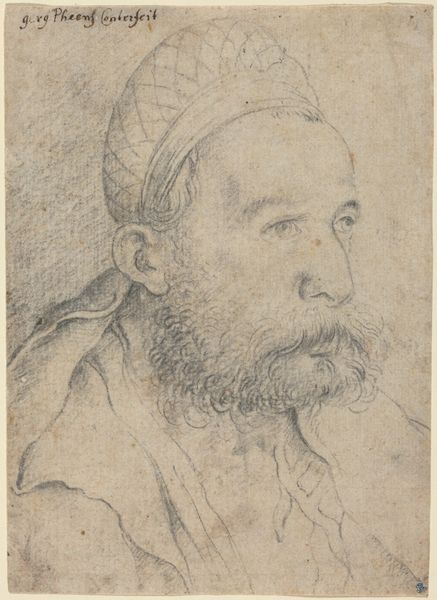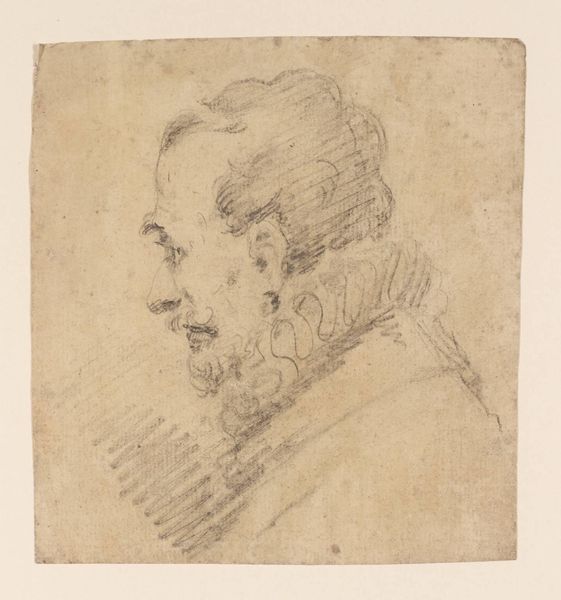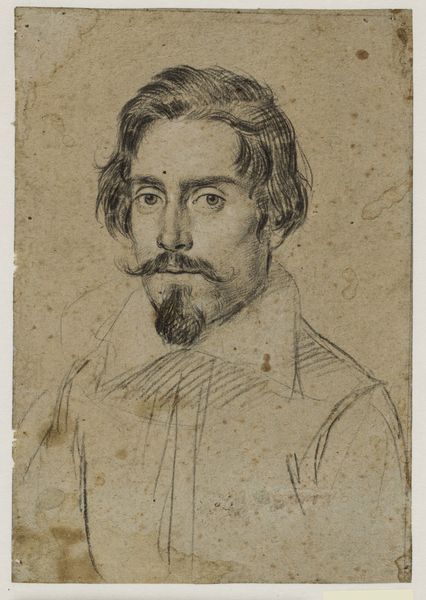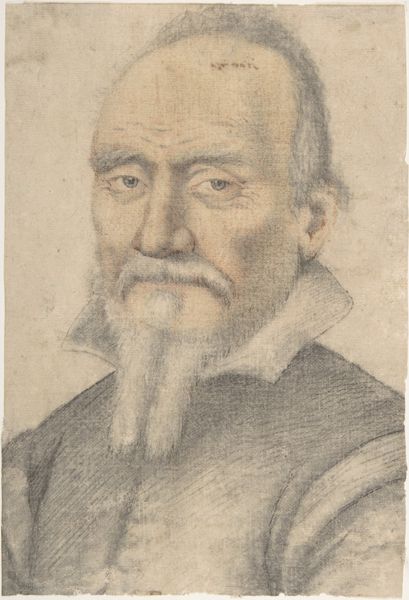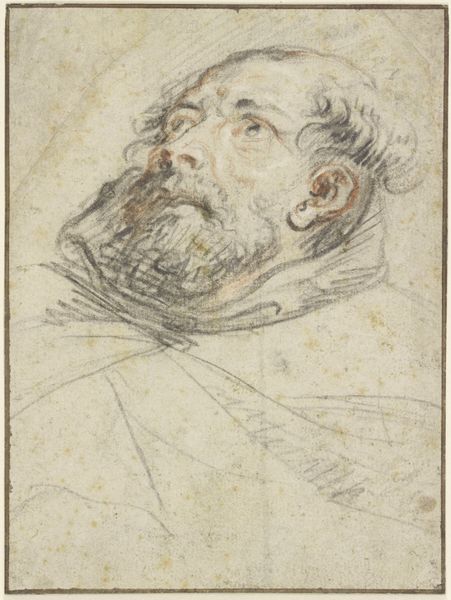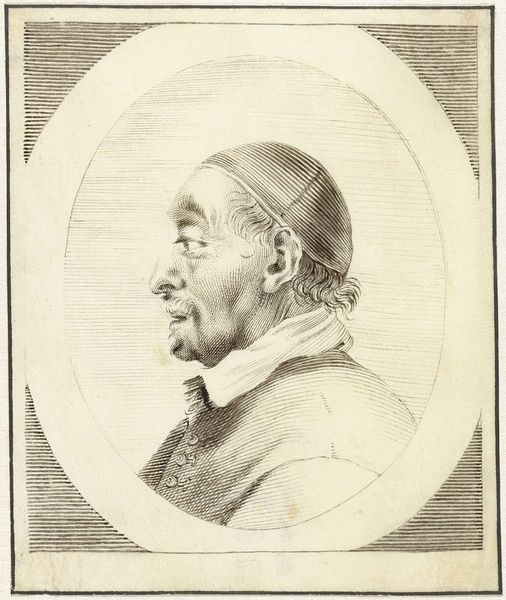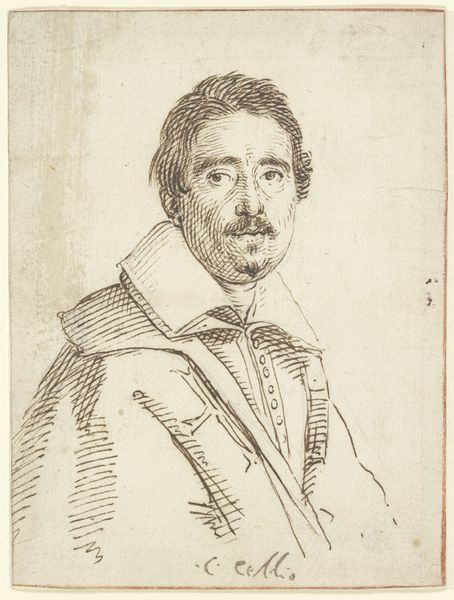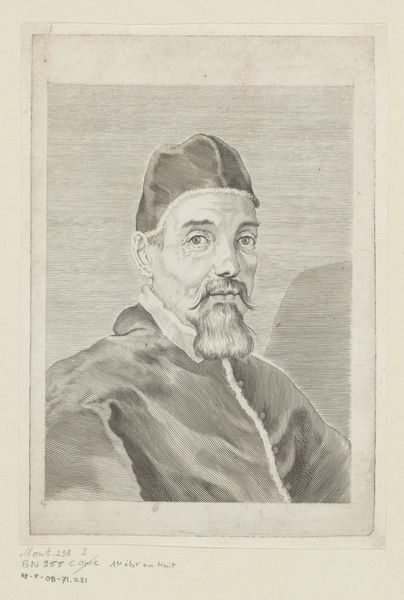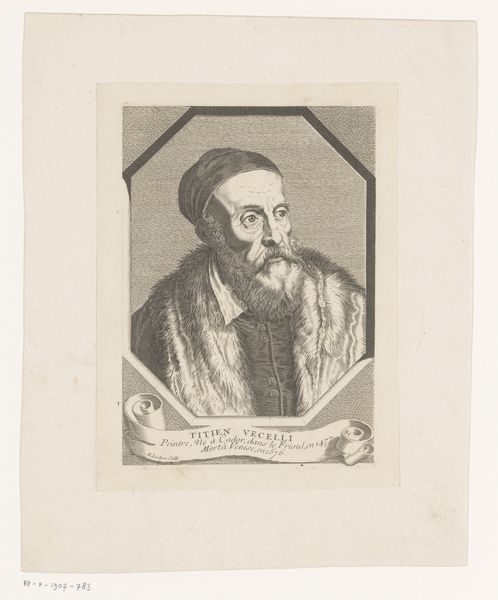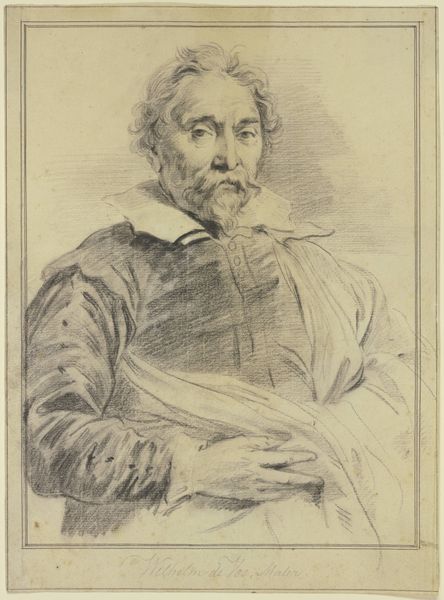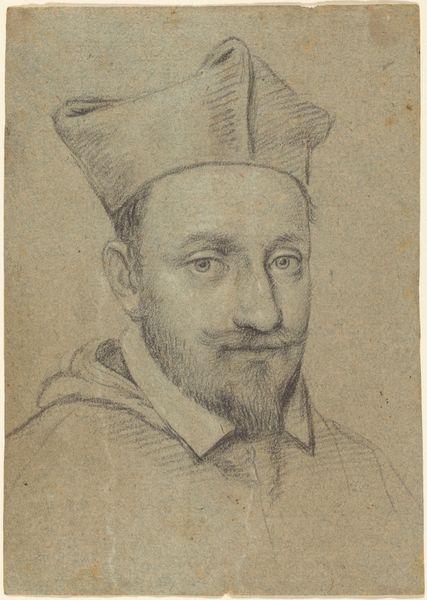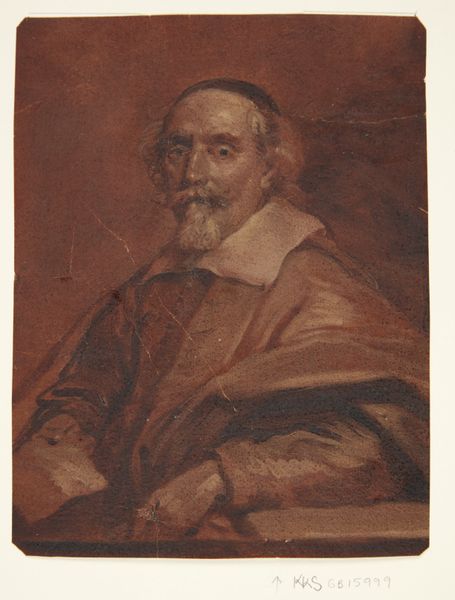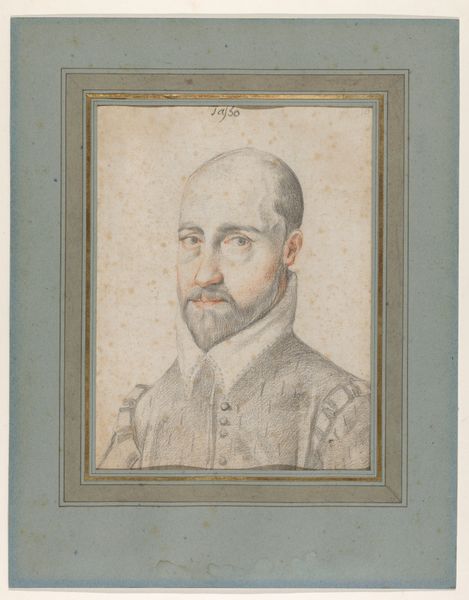
drawing
#
portrait
#
drawing
#
baroque
Dimensions: diameter: 12.9 cm (5 1/16 in.) mount: 19.2 x 19.2 cm (7 9/16 x 7 9/16 in.)
Copyright: National Gallery of Art: CC0 1.0
Curator: There's an understated gravity to this portrait. I feel immediately drawn to the delicacy of the line work and the restricted palette, giving it an ethereal quality. Editor: Agreed. What strikes me first is how this portrait drawing situates itself within the tradition of representing power and influence. This piece is Andrea Sacchi's depiction of Pope Alexander VII. Curator: Interesting! Considering the era and subject, I’m especially intrigued by the evident mark-making and sketch-like quality. There's no pretense to fully rendered opulence here. It seems like Sacchi deliberately allows us to glimpse into the *making* of the image, perhaps a study or preparatory drawing for a more ‘finished’ work. Editor: Precisely. That sketch-like quality might indeed provide insights into the economy of artistic production during the baroque period. Who was this *for*? Was this created as part of his process or presented for approval before the commission of a more finalized version? Consider the papacy as both a powerful social and artistic institution, constantly engaged in managing its image. This gives even preliminary works a public role, regardless of medium. Curator: Absolutely. It also begs the question of access. These materials--paper, pencil, even colored chalks--while relatively modest in value compared to say, oils or marble, were still a considered expense. Who had access to this *kind* of representation? How might the labor involved in its creation impact its overall reception? Editor: We see it here displayed for consumption as an artistic artifact. What about the labor required for making the paper or producing the chalk? It leads me to speculate about its position amongst other works in the gallery. Curator: It certainly makes you consider the larger economy around images of power. Its seeming modesty also underscores a certain human dimension in the subject. Editor: Yes, perhaps a subtle comment on the public perception versus private selves of those in high office? In any case, Sacchi delivers more than simply a portrait; he gives us an entry point into the complex web of image-making, labor, and socio-political dynamics that defined his era. Curator: Well said. It reminds me to think of the subtle gestures inherent in its creation—and what these choices might convey to those granted access to it, then, and us, now. Editor: It is truly an excellent piece—I am left thinking about who else may have been in Sacchi’s studio at the time, what he may have been thinking while portraying the pope, and how such factors have an impact even centuries later when we view the image.
Comments
No comments
Be the first to comment and join the conversation on the ultimate creative platform.
